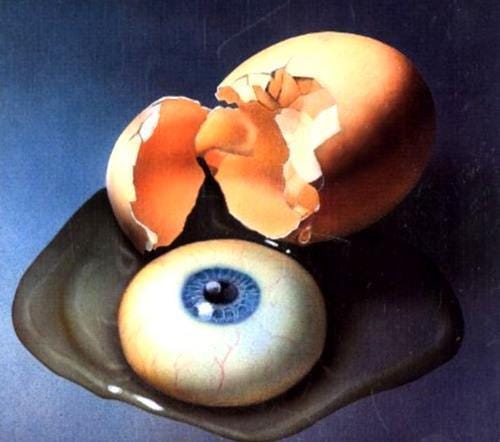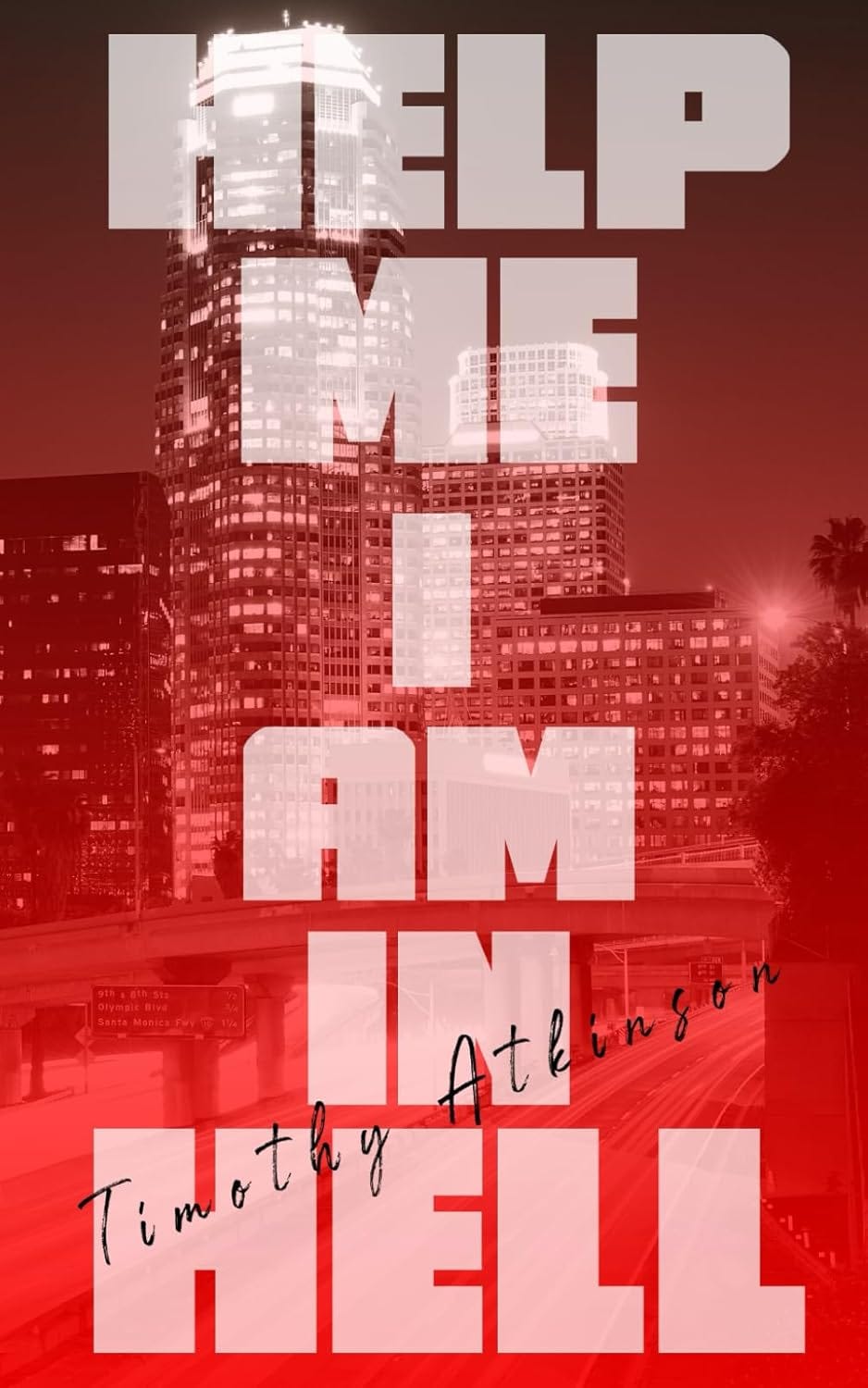I recently read Marcel Foucault’s 1963 essay “A Preface to Transgression,” which examines Georges Bataille’s 1928 novella “The Story of the Eye” and the notion of “transgression” in literature. For those unfamiliar, Bataille’s book is a raunchy good time in the vein of de Sade, who must have been an influence. The plot, if one can call it that, involves a couple of lustful teenagers whose extreme sexual abandon catapults them on a journey of deeper and deeper levels of depravity, culminating in the rape and murder of a priest and flight from the country. This novel is quite shocking, even by today’s standards. The moral turpitude displayed by our two main characters as they come and piss on each other, stick various objects such as eggs and eyeballs (seriously) up their assholes and vaginas, masturbating and fucking their way across the page, is the very definition of transgression in modern literature. Bataille of course did not invent this kind of writing, but he is an early modern example of literature breaking out of the stuffy constraints imposed by 19th century Victorianism. In “The Story of the Eye” Bataille is more interested in breaking taboos than in crafting narrative, or developing characters, or pontificating philosophically. Think early Henry Miller minus the astute observations on humanity, and turn that up to, I don’t know, a hundred-and-eleven, and you get something along the lines of “The Story of the Eye.” In Bataille we are inhabiting a world built on excess and imagination. But why? What is the purpose?
There is value in shock for shock’s sake, but often to those unfamiliar with transgressive modes of artmaking the term “shock value” is used as a pejorative. If the “purpose” of a work is to provoke, offend, piss off, unnerve, or to push the envelope, and that is its goal first and foremost, this is often viewed in critical circles as a lesser form of art than, say, Leo Tolstoy or Charles Dickens. Of course, shock itself does not necessarily need to be divorced from quality of storytelling. Lolita is able to both shock and tell a damn fine story. But what of writers and filmmakers who simply want to shock, for its own sake? Transgression by its very nature can serve art’s greater function, which is, to put it in its most simplistic form, the ability to craft expression for the sake of experience. This functions at both ends of the equation. The creator and the audience both achieve an experience of expression, the artist of their own, the audience of someone else’s. The audience’s appreciation of art may in fact be more expansive, engaging more widely in possibility, than that of its creator, because for the artist there is usually some form of intent that comprises the bedrock of the creative act, whereas the audience can craft its own individual intents based on a variety of factors, both conscious and unconscious. No two individuals will ever experience a work of art in the exact same way. Here John Waters comes to mind. John Waters’ early films were critically slandered. Those who wrote about and reviewed such things considered them trash, and Waters himself set out to make just that—trash cinema. Yet now, over fifty years later, his early films are being released one-by-one by none other than the Criterion Collection, who according to their website, restores “important classic and contemporary films.” Here Waters sits beside the likes of Kurosawa, Fellini, Bergman and Tarkovsky. Why? Because transgression is always ahead of the curve. In fact that is as good a definition of transgression as anything. Transgressive art is anything but long-lasting. It is always a product of its time. It’s shocking for a few years, but by then everyone is doing it, and though it may still be somewhat shocking decades later, like Bataille’s “Story of the Eye,” it is nowhere near as shocking as it was during its original creation. Testing the limits of what an audience will sit through is a hallmark of transgression, and that is what Foucault is pointing to when he writes that “transgression forces the limit to face the fact of its imminent disappearance.” Coco d’Hont in her essay on Marilyn Manson (which I’ll be writing about soon, separately) writes how “transgression, through the very act of crossing boundaries (re)constructs social limits.” George Bataille himself wrote that transgression “opens the door into what lies beyond the limits usually observed, but it maintains these limits just the same." Back to d’Hont: “The crossing of moral, social and cultural boundaries, in other words, does not result in the destruction or permanent disruption of social order, but maintains and redraws the limits which keep society in place.”
I’ve always liked work that does this, and have for as long as I can remember. I also enjoy witnessing others’ reactions to it. But I also think it does something important by pushing us, as a society, further and further away from our puritanical origins and into the realm of the devious. We like to think of ourselves as a progressive society, and in many ways we are. What, after all, was more transgressive at the time of its writing than The Declaration of Independence? Yet it was not that long ago that Naked Lunch was actually on trial for obscenity. Imagine that. Obscenity in art was itself a crime. Shortly before that was the Hays code that purported to take transgression out of cinema altogether. In the 60s, drugs were transgressive. Timothy Leary did over five years in prison for the possession of two joints. Can you imagine that happening today? Elvis was transgressive. So too The Beatles. N.W.A. Remember when parental groups lobbied to have parental advisory stickers on albums that contained explicit lyrics? Tipper Gore, C. Delores Tucker. Trent Reznor, who founded Nine Inch Nails and produced The Downward Spiral, just scored the new Ninja Turtles movie. Remember Tom Green? Freddy Got Fingered is brilliant, and I’m not being facetious saying so. All these people paved the way for a society that is less easily shocked and prone to artistic censorship than ever before. That’s not to say censorship does not exist today, it does, and always will, because there will always be new self-erected boundaries to transgress. But that is exactly the point. Transgression is a moving target. It propels us. It breaks down the walls of what is socially acceptable and then builds new ones further out, leading us to accept what was once unacceptable, and even, sometimes, to embrace it. Transgressive art is the mode through which we reveal ourselves to society, the way we show the things that exist that others may be unaware of, and yes, sometimes we shove their faces in it, because their faces need to be shoved in it, they need to eat the puke and piss and shit of their own self-righteous degradation. So I say be offensive, and be offensive on purpose. Make your audience squirm. Watch A Serbian Film. Read My Absolute Darling. Find what people are scared of, and exploit their fear. Let them crusade against you. Be a witch, a warlock, a shaman. Break bread with the devil. The devil is your friend. And in the words of Lloyd Kaufman, co-founder of Troma Entertainment, the most transgressive production company in movie history: “Let’s make some art.”
Consider supporting my work by becoming a paid subscriber.
Yearly subscribers ($40/yr) and Premium Transgressors ($100/yr) can receive a signed copy of my novel HELP ME I AM IN HELL upon request.
Or just make a one time donation:
Thanks for reading. My debut novel HELP ME I AM IN HELL is out now.






added J.C. Oates to my comment - my idol
Pretty great article on fiction labeled “transgressive”! IMO, most writers labeled transgressive are not just doing it for shock value (or to condone abject cruelty to others or to promote anti-feminist views) but instead are pushing the envelope in their exploration of human nature (and the varying degrees of deviancy we all possess). At the moment (not enough coffee) I can’t think of more female writers of the past in this vein, off the top of my head except the great Kathy Acker! (Margaret Atwood and J.C. Oates, too of course) Range is good! Some of my stories could be labeled transgressive, I guess, while others are about “nice normal” people, whatever that means.